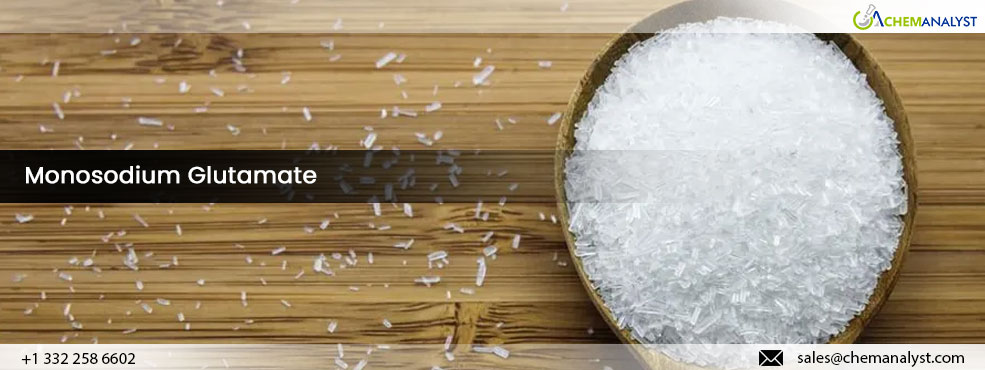Global Monosodium Glutamate Market Faces Price Volatility Amidst Changing Agricultural Landscape
- 04-Sep-2024 3:20 PM
- Journalist: Emilia Jackson
In recent months, the global Monosodium Glutamate market has witnessed a series of price shifts, reflecting the complex interplay of agricultural trends, geopolitical factors, and changing consumer preferences. Monosodium Glutamate (MSG), a flavor enhancer widely used in the food industry, has been experiencing significant price fluctuations across various regions worldwide. This umami-boosting substance, derived primarily from fermented corn or sugar cane, has become a staple in many cuisines and processed foods since its discovery in 1908 by Japanese biochemist Kikunae Ikeda.
Industry experts are closely monitoring these developments, as Monosodium Glutamate prices often serve as a barometer for broader trends in the food additives sector.
The volatility in Monosodium Glutamate prices can be largely attributed to the fluctuating costs of its primary raw material: corn. Surprisingly, despite initial concerns, the world's major agricultural regions have experienced favorable weather conditions this growing season. This unexpected turn of events has led to an oversupply of key agricultural commodities, including corn, resulting in significantly lower prices compared to the previous two years.
The impact of this agricultural abundance extends far beyond the Monosodium Glutamate market. From the expansive US Midwest to the vast plains of Kazakhstan, and from the Brazilian savannah to the Australian grasslands, farmers are anticipating bumper harvests. This global phenomenon has already driven the costs of wheat, corn, and soybeans to four-year lows, with prices plummeting approximately 50% from the record highs set in 2022 following Russia's invasion of Ukraine. In the United States, the decline in corn prices has been particularly pronounced, falling to a four-year low, which has contributed to a decrease in the production costs of Monosodium Glutamate. This reduction in raw material costs has enabled US producers to offer Monosodium Glutamate at more competitive prices, both domestically and in international markets.
For Monosodium Glutamate manufacturers, this downturn in corn prices presents both opportunities and challenges. On one hand, reduced raw material costs could potentially lead to higher profit margins. However, intense competition within the industry may force producers to pass these savings onto consumers, potentially triggering a price war in the Monosodium Glutamate market.
The situation is further complicated by regional variations in Monosodium Glutamate demand and production capacities. In Asia, where Monosodium Glutamate consumption remains high, producers are carefully balancing their output with fluctuating raw material costs. Meanwhile, North American and European manufacturers are grappling with changing consumer sentiments towards Monosodium Glutamate, as health-conscious buyers increasingly seek out "MSG-free" products.
China, as the world's largest producer and consumer of Monosodium Glutamate, plays a pivotal role in shaping global market trends. Recent data from Chinese markets indicate that corn inventories are at high levels, with downstream grain-consuming enterprises showing little urgency to replenish stocks. This oversupply situation is exerting downward pressure on corn prices, which could potentially lead to reduced Monosodium Glutamate production costs in the coming months.
In India, another key player in the global food additives market, the situation is more complex. While India's role as a grain exporter has diminished over the past three years due to strong domestic demand and government policies, its impact on the Monosodium Glutamate market remains significant. The country's growing poultry sector and ethanol production initiatives have increased domestic corn demand, potentially affecting Monosodium Glutamate production and pricing strategies.
Looking ahead, industry analysts predict that Monosodium Glutamate prices will likely remain volatile in the short to medium term. The interplay between agricultural commodity prices, regional demand variations, and evolving consumer preferences will continue to shape the market landscape.



